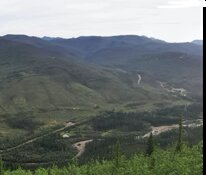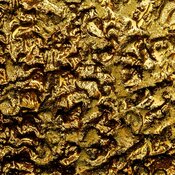The Gold Report: Where do you see the price of gold going this year?
Duncan Hughes: Gold should remain fairly flat, probably around US$1,225 per ounce (US$1,225/oz), due to the strength of the U.S. dollar. In U.S. dollar terms, gold has underperformed, but when valued in other currencies, gold has actually performed pretty well.
TGR: How about nickel and copper?
DH: Current spot prices just don't look sustainable to us. The price of nickel is depressed now because there are 400,000 tons stockpiled in the London Metal Exchange (LME), and the global market is about 2 million tons (2 Mt). The expected increase in the price of nickel following Indonesia's ban on the export of unprocessed ore has been delayed because of ore coming from the Philippines. But this substitute ore is a lower-quality product, and stockpiles will eventually fall in China. So the supply crunch that was forecast for early 2015 will now occur later in the year.
At the current price of around US$2.75/pound (US$2.75/lb), a fair amount of the copper industry is underwater. So we expect price increases beginning in the second half of 2015.
TGR: Canadian mining companies have benefited greatly from the strength of the U.S. dollar. How great has the benefit been to Australian miners?
DH: It's huge. The Aussie dollar has fallen from parity last year to US$0.76 today. So, for example, gold at US$1,200/oz translates to AU$1,570/oz, and nickel at US$5.70/lb means AU$7.50/lb. Without this currency premium, we'd see many Australian mine closures.
TGR: So are Australian miners now dependent on this currency premium in order to maintain margins?
DH: There are some high-cost assets that are producing only because of the Aussie gold price. This effect is even greater with nickel miners, as the price of nickel has really surprised to the downside. A number of Australian nickel producers are in trouble even with the weak local currency. Fortunately, they saved cash from the good times, but if it weren't for the exchange rate, half of Australian nickel production would be underwater.
TGR: What's your favorite junior Australian gold producer?
DH: I like Independence Group NL (IGO:ASX). Now, this is arguably a diversified producer, with three operations in Western Australia. It produces gold from Tropicana in a joint venture (JV) with AngloGold Ashanti Ltd. (AU:NYSE; ANG:JSE; AGG:ASX; AGD:LSE). It produces nickel from a high-grade underground mine called Long, and it produces copper and zinc from its Jaguar mine.
"In U.S. dollar terms, gold has underperformed, but when valued in other currencies, gold has actually performed pretty well."
Diversification has allowed this company to ride out these bumpy years in the mining business, but Tropicana, which achieved nameplate capacity last year, has been the driving force. It produces gold at AU$600/oz, and that provides massive margins in any currency. Independence only has a 30% share of Tropicana, but that's 30% of 470,000–490,000 oz (470–490 Koz) per year, which means a significant amount of cash flow.
TGR: Independence Group shares are up 33% over the past year. Can we expect this share rise to continue?
DH: I think its current assets are reasonably close to being priced in at current commodity prices. That said, there is the expectation that base metal prices will rise this year, which would obviously help. Independence had AU$93 million (AU$93M) in cash at the beginning of the year, and I think the company needs to do something with that to provide future sustainable growth. This is a company that has a great opportunity to pursue profitable mergers and acquisitions (M&As).
With commodity prices so low, I expect to see a lot of M&As in this sector generally, with cash-rich companies such as Independence Group taking advantage.
TGR: How do you rate the prospects of the other Australian gold producers you follow?
DH: I really like Doray Minerals Ltd. (DRM:ASX), which also operates in Western Australia. Its Andy Well mine produces gold at all-in costs of about AU$1,000–1,100/oz. That provides, hedging included, margins of about AU$450/oz, which is pretty nice. The secret here is the high-grade: 9 grams per ton (9 g/t).
"I would look to accumulate base metal producers toward the end of 2015 in anticipation of higher prices."
There were a few hiccups late last year when Doray had some issues with the underground scoping where it was diluting the grade. But I've just come back from the site, and I'm persuaded that this problem has been addressed.
TGR: Doray merged with Mutiny Gold last year. What does Mutiny bring to the table?
DH: The Deflector copper-gold project in Western Australia, which is similar in style to Andy Well. This acquisition creates serious synergies and should boost annual gold-equivalent ounces to 150 Koz with lower costs, due to copper credits. Deflector has yet to be financed, but I'm modeling production by mid-2016.
TGR: How about Australian juniors with global assets?
DH: Resolute Mining Ltd. (RSG:ASX) has the Ravenswood mine in Queensland. But Ravenswood is coming to the end of its life, and Resolute's future is its West African assets.
Its Syama mine in Mali is a strong, robust project with a very healthy resources and reserve base. It produced 165 Koz gold last year at 3.73 g/t and AU$1,006/oz. As an African producer, Resolute is much more leveraged to the U.S. dollar gold price, and when that falls, it has to put on the brakes. That's what happened last year with Syama. It appears Resolute will not go ahead with its stage 2 cutback on the open pit because it couldn't finance what would have been a US$100M capital expenditure (capex).
TGR: Resolute intends to go underground at Syama. How important is this to the company's future?
DH: It's crucial. A study due later this quarter will explain the company's plan. As an analyst, I'm looking forward keenly to that, but the company does have a strong track record of underground mining at a relatively low underground grade.
TGR: Does Resolute have any future upside?
DH: Yes, at its Bibiani gold project in Ghana. It has a current resource of 1.7 million ounces (1.7 Moz) at 3.4 g/t, but the historical mine there produced a grade of 9.5 g/t. Recent assays have been quite good: 3.07 g/t over 78.1 meters (78.1m), 4.05 g/t over 29.6m, 7.69 g/t over 19.2m, 4.82 g/t over 23m and 6.39 g/t over 16m. But Bibiani is years away.
TGR: How has mining risk in Africa changed?
DH: I think it's pretty much the same as it's always been. Africa is always going to have problems with corruption and mismanagement. The big challenge for the continent will be transportation infrastructure, with a major challenge also being power.
"Investing in Australian-domiciled projects provides exposure to a highly favorable exchange rate."
There are still issues with terrorism, which we've seen in Kenya and West Africa, but the risk of nationalization seems to have fallen. A lot of things happen slowly in Africa, but sudden political and social changes often happen quite quickly: a new taxation regime or regime change itself, which we saw in Burkina Faso, one of my favorite jurisdictions.
TGR: How would you assess the situation in Zambia and the Democratic Republic of the Congo (DRC)?
DH: Zambia instituted, in my opinion, ridiculously high royalties, and now it seems it will have to step back from that.
The DRC is proposing a new mining code that could be the same mistake Zambia made, but the DRC has a long history of uncertainty. It is a difficult place to operate, and you need to follow events very closely in that country, not only nationally but regionally as well. For instance, Katanga province, where most of the copper miners are, suffers less risk than other parts of the country. The DRC is a classic risk/reward situation. There is just so much potential there. I mean, you don't get 7% copper outcropping in many parts of the world, but you do in the DRC.
TGR: Do you follow any companies operating in the DRC?
DH: Yes, a junior explorer called Regal Resources Ltd. (RER:ASX). It has the Kalongwe project in Katanga, which has got 300,000 tons of copper at about 3% and about 50,000 tons of pretty high-grade cobalt, just shy of 1%. What I like about Regal is the management has done it before. They were involved in Tiger Resources Ltd. (TGS:ASX), which has had issues recently, but has been very successful at producing a copper-cobalt concentrate from its Kipoi project in the DRC.
Our expectation is that Regal will do the same from its resource base. As copper prices rise, this would be a profitable operation. In addition, the company is primed to take advantage of other opportunities in country due to its very strong contacts and its strong relationship with its JV partner, Traxys Europe SA, a metal trader.
TGR: Which other African producers do you like?
DH: Perseus Mining Ltd. (PRU:TSX; PRU:ASX), which operates in Ghana and Côte d'Ivoire. It has been a relatively high-cost producer, and it is highly leveraged to the U.S. gold price, but it has been making real progress in reducing costs. This company is benefiting from the competition in the mining services space. I'm confident it will reduce costs further, perhaps as much as $1 per ton of rock moved. This will have a huge impact on its valuation. Gold production is expected to rise from 213 Koz in 2015 to 255 Koz in 2017.
Perseus has made the best of a bad situation at its Edikan gold mine, which has been exposed to power restrictions in Ghana. Grid power has been sporadic, and it has basically had to shut down the mill every third day, which has resulted in reduced production and guidance. The company is bringing in diesel power, which is much cheaper with the oil price collapse.
In addition, the company has a development project, Sissingué, in Cote d'Ivoire, a good jurisdiction. It's a small project, perhaps 70 Koz per annum, but looks likely to be very profitable. A production decision is expected any day now. Perseus' balance sheet is pretty strong. It has over AU$50M in cash and thus is well positioned for M&As. The outlook for this company is very strong.
TGR: Let's talk about Australian nickel juniors.
DH: This is a subject close to my heart. As I mentioned above, the nickel price will rise, and this will benefit especially Australian producers, not merely because of the weak Aussie dollar but because these are high-quality, nickel-sulfide projects rather than lower-quality, laterite projects.
TGR: Which nickel juniors do you like best?
DH: I'll mention a few. Although I don't cover it, Western Areas Ltd. (WSA:ASX; FX9:FRA; WNARF:OTCMKTS) looks good. This is a pure nickel play with a low cash cost from high-grade deposits. The future looks pretty strong for it.
With regard to nickel price rise, you would find few nickel pure plays better leveraged than Panoramic Resources Ltd. (PAN:ASX) and Mincor Resources NL (MCR:ASX). Mincor is not making money at current prices, but a rise in the price would see a significant rise in the share price. And to boot, Mincor offers exploration upside. It has had some really good results in the world-class Kambalda region, and future mines could develop from those discoveries.
TGR: What about the nickel exploration and development pipeline?
DH: Sirius Resources NL (SIR:ASX). I recently visited its Nova-Bollinger nickel-copper mine in Western Australia. This has a AU$443M capex, but it is fully funded through equity and debt, and the company has a cash balance well in excess of AU$200M.
This mine will be one of the lowest-cost nickel producers around: perhaps US$2.50/lb after the copper credit. The exciting thing is that the management team has a great background in exploration, and is already finding other resources. Sirius recently drilled a gold project called Baloo and published assays of 9 g/t over 10m and 6 g/t over 10m, right next to an operating mine. Even if Baloo doesn't meet the potential for a standalone mine, it certainly looks like it's got a customer on its doorstep.
TGR: What's your view of the state of the graphite market?
DH: This is a developing story. Traditional supply has come largely from China, so there's uncertainty about those numbers. We know that the traditional market is currently quite small, about 1 Mt per annum or thereabouts. Many companies are developing potential new supply, which could overwhelm the market. I think the trick in the graphite market is the availability of different types of product.
Having said this, Triton Minerals Ltd. (ASX:TON) just secured a 20 year, $2 billion, 100 Kt binding offtake agreement for its Mozambique graphite with Yichang Xincheng Graphite Co. Ltd. of China. So it would seem that there is quite a bit more demand from China than we've assumed, and this could grow substantially larger.
There's a lot of potential supply coming on, so the advantage is being able to cherry pick from a large resource. Triton has the world's largest and highest-grade graphite resource and has plenty of products to suit the demands of potential offtakers. It can produce some very coarse flake. It can produce some finer flake. It can produce purity.
TGR: Were you surprised by the size of Triton's offtake?
DH: I was. This is an excellent result for Triton. It's not only binding, it's got a floor price as well, which provides some comfort with regard to future pricing. And this deal is exclusive to the entirety of East Africa. Triton has potential to act as a broker for its peers in the region. The other plus I take from the offtake is that Yichang is a proper graphite player with an actual factory.
TGR: How do you rate Mozambique as a mining jurisdiction?
DH: I have been there, and the government is very supportive of developing its mining potential, be it coal, graphite or mineral sands. In particular, Mozambique's infrastructure shouldn't be underestimated. There is good power to the projects and a sealed road to port. The country is developing oil and gas opportunities offshore and with that comes infrastructure. The port of Pemba, about 200 kilometers from Triton's project, is growing exponentially. I'd rate Mozambique as safe and stable and one of the best mining jurisdictions in Africa.
TGR: How should investors react to current metal prices?
DH: I would look to accumulate base metal producers toward the end of 2015 in anticipation of higher prices. Gold investors should seek out high-quality, low-cost operations such as Independence Group's Tropicana, which provide certainty of profit. And investing in Australian-domiciled projects provides exposure to a highly favorable exchange rate.
TGR: Duncan, thank you for your time and your insights.
 Duncan Hughes joined GMP Securities Australia as a mining analyst in 2014. Prior to joining GMP, Hughes was head of research for RFC Ambrian Ltd. in Perth, Australia, beginning in 2010. A geologist, he has more than 15 years of experience in the resources industry and managed the discovery and development of the Prospero, Tapinos and Alec Mairs ore bodies for Jubilee Mines/Xstrata. He worked previously for CD Capital and Linq Capital. He holds a Bachelor of Science (Honours) from Oxford Brookes University and a Master of Business Administration from Imperial College London.
Duncan Hughes joined GMP Securities Australia as a mining analyst in 2014. Prior to joining GMP, Hughes was head of research for RFC Ambrian Ltd. in Perth, Australia, beginning in 2010. A geologist, he has more than 15 years of experience in the resources industry and managed the discovery and development of the Prospero, Tapinos and Alec Mairs ore bodies for Jubilee Mines/Xstrata. He worked previously for CD Capital and Linq Capital. He holds a Bachelor of Science (Honours) from Oxford Brookes University and a Master of Business Administration from Imperial College London.
Want to read more Gold Report interviews like this? Sign up for our free e-newsletter, and you'll learn when new articles have been published. To see a list of recent interviews with industry analysts and commentators, visit our Streetwise Interviews page.
DISCLOSURE:
1) Kevin Michael Grace conducted this interview for Streetwise Reports LLC, publisher of The Gold Report, The Energy Report, The Life Sciences Report and The Mining Report, and provides services to Streetwise Reports as an independent contractor. He owns, or his family owns, shares of the following companies mentioned in this interview: None.
2) Duncan Hughes: I own, or my family owns, shares of the following companies mentioned in this interview: Mincor Resources NL. I personally am, or my family is, paid by the following companies mentioned in this interview: None. My company has a financial relationship with the following companies mentioned in this interview: Triton Minerals Ltd., Resolute Mining Ltd., Doray Minerals Ltd. and Perseus Mining Ltd. I was not paid by Streetwise Reports for participating in this interview. Comments and opinions expressed are my own comments and opinions. I determined and had final say over which companies would be included in the interview based on my research, understanding of the sector and interview theme. I had the opportunity to review the interview for accuracy as of the date of the interview and am responsible for the content of the interview.
3) Interviews are edited for clarity. Streetwise Reports does not make editorial comments or change experts' statements without their consent.
4) The interview does not constitute investment advice. Each reader is encouraged to consult with his or her individual financial professional and any action a reader takes as a result of information presented here is his or her own responsibility. By opening this page, each reader accepts and agrees to Streetwise Reports' terms of use and full legal disclaimer.
5) From time to time, Streetwise Reports LLC and its directors, officers, employees or members of their families, as well as persons interviewed for articles and interviews on the site, may have a long or short position in securities mentioned. Directors, officers, employees or members of their families are prohibited from making purchases and/or sales of those securities in the open market or otherwise during the up-to-four-week interval from the time of the interview until after it publishes.










































